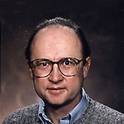
Article
Optical remote sensing of the thermosphere with heater induced artificial airglow (HIAA)
Journal of Geophysical Research
(2000)
Abstract
Optical emissions excited by high-power radio waves in the ionosphere can be used to measure a wide variety of parameters in the thermosphere. Powerful high-frequency (HF) radio waves produce energetic electrons in the region where the waves reflect in the F region. These hot or suprathermal electrons collide with atomic oxygen atoms to produce localized regions of metastable O(1D) and O(1S) atoms. These metastables subsequently radiate 630.0 and 557.7 nm, respectively, to produce clouds of HF pumped artificial airglow (HPAA). The shapes of the HPAA clouds are determined by the structure of large-scale (≈10 km) plasma irregularities that occur naturally or that develop during ionospheric heating. When the HF wave is operated continuously, the motion of the airglow clouds follows the E × B drift of the plasma. When the HF wave is turned off, the airglow clouds decay by collisional quenching and radiation, expand by neutral diffusion, and drift in response to neutral winds. Images of HPAA clouds, obtained using both continuous and stepped radio wave transmissions, are processed to yield the electric fields, neutral wind vectors, and diffusion coefficients in the upper atmosphere. This technique is illustrated using data that were obtained in March 1993 and 1995 at the ionospheric modification facility near Nizhny Novgorod, Russia. Analysis of HPAA clouds yields zonal plasma drifts of 70 m s−1 eastward at night. On the basis of artificial airglow from energetic electrons generated at 260 km the zonal neutral wind speed was estimated to be 96 m s−1 and the O(1D) diffusion coefficient was determined to be between 0.8 and 1.4 × 1011 cm2 s−1. The quenched lifetime of the O(1D) was determined to be 29.4 s. The diffusion and quenching rates are directly related to the atomic and molecular concentrations in the thermosphere. Improvements in the remote-sensing technique may be obtained if the intensity of the artificial airglow emissions is increased. High-power radio transmissions employing pulse sequences and tuning near electron cyclotron harmonics were attempted to increase the optical emissions. Both of these, however, produced reduced intensity, and consequently, continuous transmission at frequencies away from electron gyro harmonics is the preferred heating regime.
Keywords
- optical,
- remote,
- sensing,
- thermosphere,
- heater,
- induced,
- artificial,
- airglow
Disciplines
Publication Date
May 1, 2000
Publisher Statement
Copyright 2000 by the American Geophysical Union.
DOI: 10.1029/1999JA000366
Citation Information
Bernhardt, P. A., M. Wong, J. D. Huba, B. G. Fejer, L. S. Wagner, J. A. Goldstein, C. A.
Selcher, V. L. Frolov, and E. N. Sergeev, Optical remote sensing of the thermosphere with
heater induced artificial airglow (HIAA), J. Geophys. Res., 105, 10,657, 2000.
